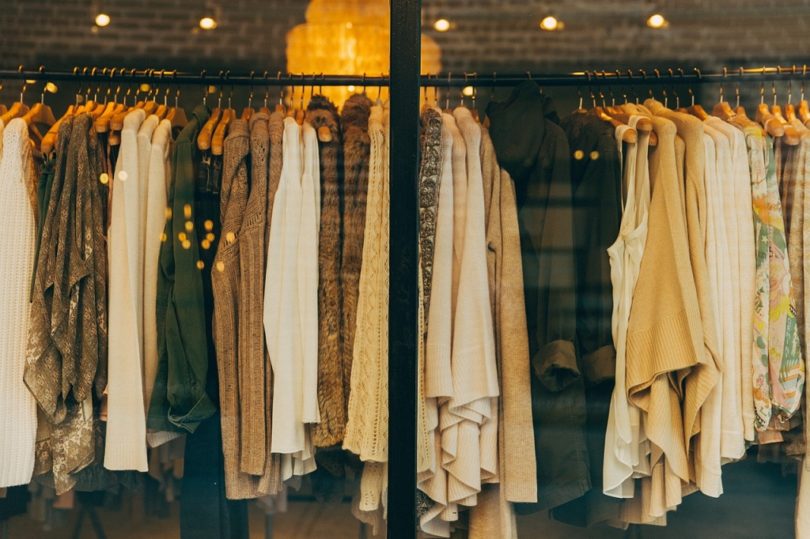Checking Out the Advancement and Effect of Clothes on Modern Style Trends
The evolution of garments has considerably influenced modern-day fashion trends, combining historical precedents with cutting-edge technologies. Famous figures like Coco Chanel and Yves Saint Laurent reinvented the fashion industry by presenting ideas that focus on convenience and accessibility, which proceed to reverberate today.
Historic Style Influencers
In the tapestry of fashion background, certain numbers have left an indelible mark, forming the patterns and designs that define whole ages. Coco Chanel, an innovative developer, redefined ladies's fashion by presenting comfortable, classy apparel that departed from limiting bodices. Her renowned Chanel suit and little black outfit have become ageless staples in closets worldwide. Likewise, Christian Dior's post-war "Face-lift" in 1947, with its party of femininity through complete skirts and cinched waists, marked a go back to luxury and has continued to influence developers.
Elsa Schiaparelli is another crucial number, renowned for her avant-garde styles that integrated surrealist art, teaming up with Salvador Dalí to create whimsical items that challenged standard aesthetic appeals. Her cutting-edge use color and bold patterns reverberates in contemporary style. Yves Saint Laurent, on the other hand, equalized haute couture with prêt-à-porter collections, bringing runway designs to the masses and establishing a precedent for modern-day ready-to-wear lines.
These dreamers, among others, not only changed fashion in their times yet likewise set sustaining trends that reverberate in today's apparel industry, giving a structure upon which modern developers remain to innovate and build. Their traditions underscore the importance of creative thinking and bold in fashion's ever-evolving story.
Technological Developments in vogue
Amidst the vibrant landscape of the garment industry, technological advancements stand at the leading edge of development, reshaping how developers create and customers engage with style. The assimilation of 3D printing has changed design procedures, enabling developers to try out complex frameworks and lasting products that were previously impossible. This innovation facilitates quick prototyping, lowering waste and accelerating production times.

Smart textiles, installing modern technology into materials, are likewise transforming the industry. Developments like self-cleaning and temperature-regulating fabrics provide enhanced capability and comfort. Wearable technology, incorporating functions like health and fitness monitoring and communication, adds a brand-new measurement to style, combining visual appeals with usefulness.
Social Changes and Style
As technological developments continue to reshape the fashion market, social shifts are equally significant, redefining design and consumer choices. In the last few years, the surge of social media sites platforms has accelerated the circulation of worldwide style fads, enabling diverse cultural influences to exist together and converge. This electronic interconnectivity has promoted the rapid exchange of concepts, bring about a much more eclectic and inclusive interpretation of style that reflects the multifaceted nature of contemporary society.
Social awareness and admiration have actually prompted designers to draw inspiration from a wider spectrum of historical and ethnic contexts, incorporating typical motifs with contemporary visual appeals. This fusion has actually resulted in style that resonates with a broader audience, promoting a sense of identity and belonging throughout various demographics. Furthermore, the enhancing need for customization has actually driven brand names to supply personalized alternatives, allowing consumers to reveal individuality while mirroring their social heritage.
Moreover, shifting societal values have actually affected fashion, with inclusivity and diversity becoming central themes. The market has actually started to welcome models and influencers of numerous physique, ethnicities, and sex identities, tough standard charm criteria. This makeover highlights the power of cultural shifts in forming the future of fashion, as design becomes a more genuine expression of cumulative and individual identity.
Sustainability and Modern Design
While the fashion market continues to progress, the vital for sustainability has actually ended up being progressively immediate, influencing modern-day style practices. The rise of sluggish style, which highlights top quality over quantity, motivates customers to invest in classic items instead than transient trends.
Moreover, modern design is identified by its advancement in decreasing waste and promoting circularity. This technique not just minimizes ecological impact yet additionally boosts the social responsibility of style houses.

Future Trends in vogue

Sustainability will remain to be a driving force in forming future style fads. The market here are the findings is significantly adopting environment-friendly materials and ethical production approaches, replying to an expanding customer need for liable techniques. Innovations such as bio-fabricated products and closed-loop recycling systems are readied to redefine exactly how clothes is created and consumed, lowering ecological influence while preserving design and high quality.
Cultural changes, consisting of the surge of inclusivity and diversity, will certainly likewise play an essential role. As culture comes to be much more aware of social concerns, fashion is expected to come to be a system for expression and adjustment. Developers will likely concentrate on producing collections that show a broader variety of identities and experiences, promoting depiction and ease of access.
Verdict
The advancement of garments considerably influences contemporary style patterns, where historical impacts combine with contemporary layouts. Trick figures like Coco Chanel and Yves Saint Laurent have redefined style, while technological advancements such as 3D printing and wise textiles increase imaginative possibilities. Social shifts in the direction of inclusivity and sustainability compel brand names to embrace ethical methods and embrace variety. This ongoing development highlights fashion's role as a mirror to societal values and technological improvement, recommending a future rich with development and inclusivity.
The evolution of apparel has actually dramatically affected contemporary fashion trends, combining historic try this site precedents with advanced innovations.Amidst the vibrant landscape of the style market, technological developments stand at the forefront of development, improving how designers develop and consumers engage with style.While the style market continues to advance, the crucial for sustainability has become significantly immediate, influencing modern-day layout methods. As sustainability becomes ingrained in contemporary layout, it leads the way for an extra aware and accountable fashion industry.
The advancement of clothes significantly influences contemporary style patterns, where historical influences combine with modern designs.